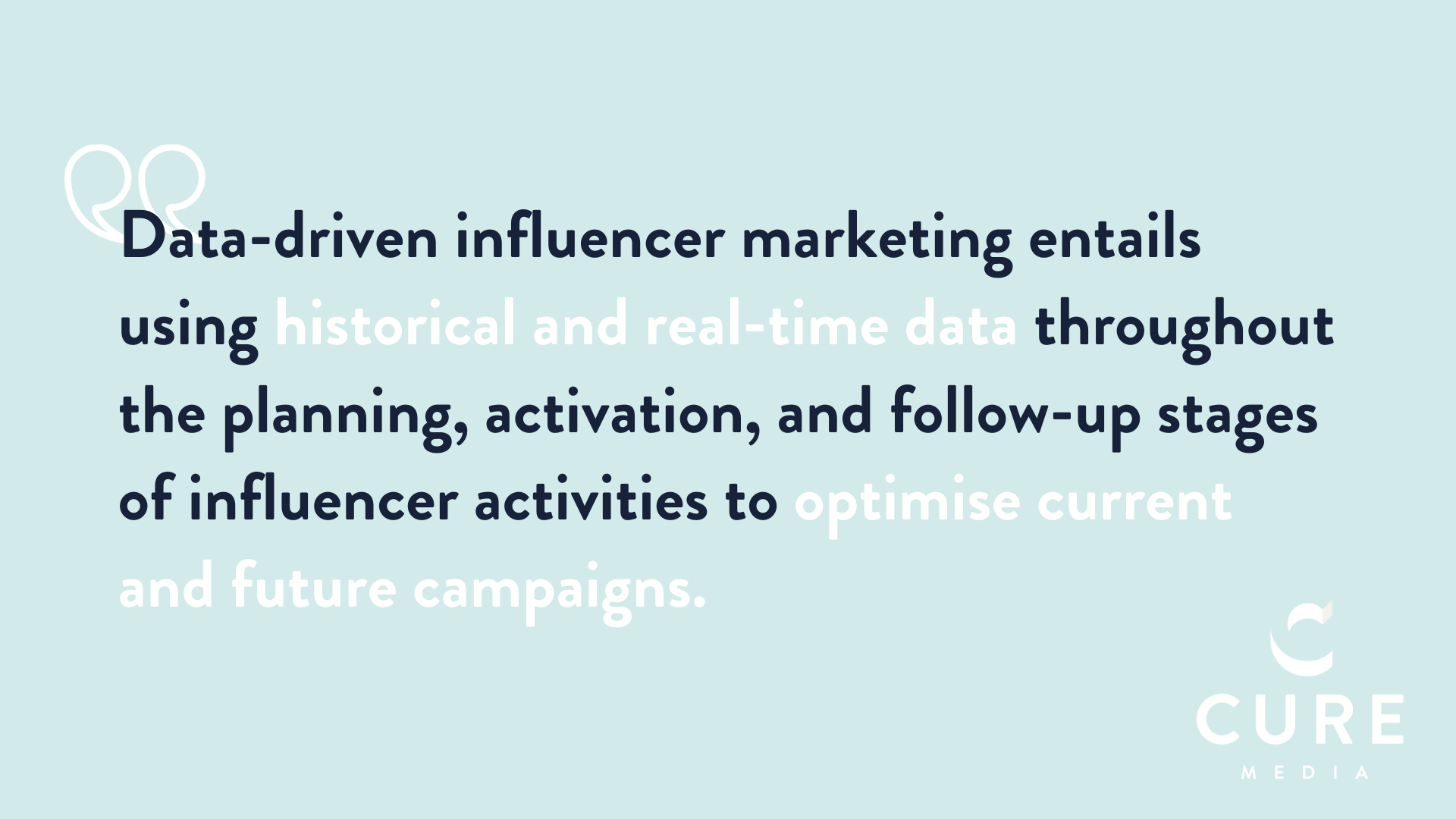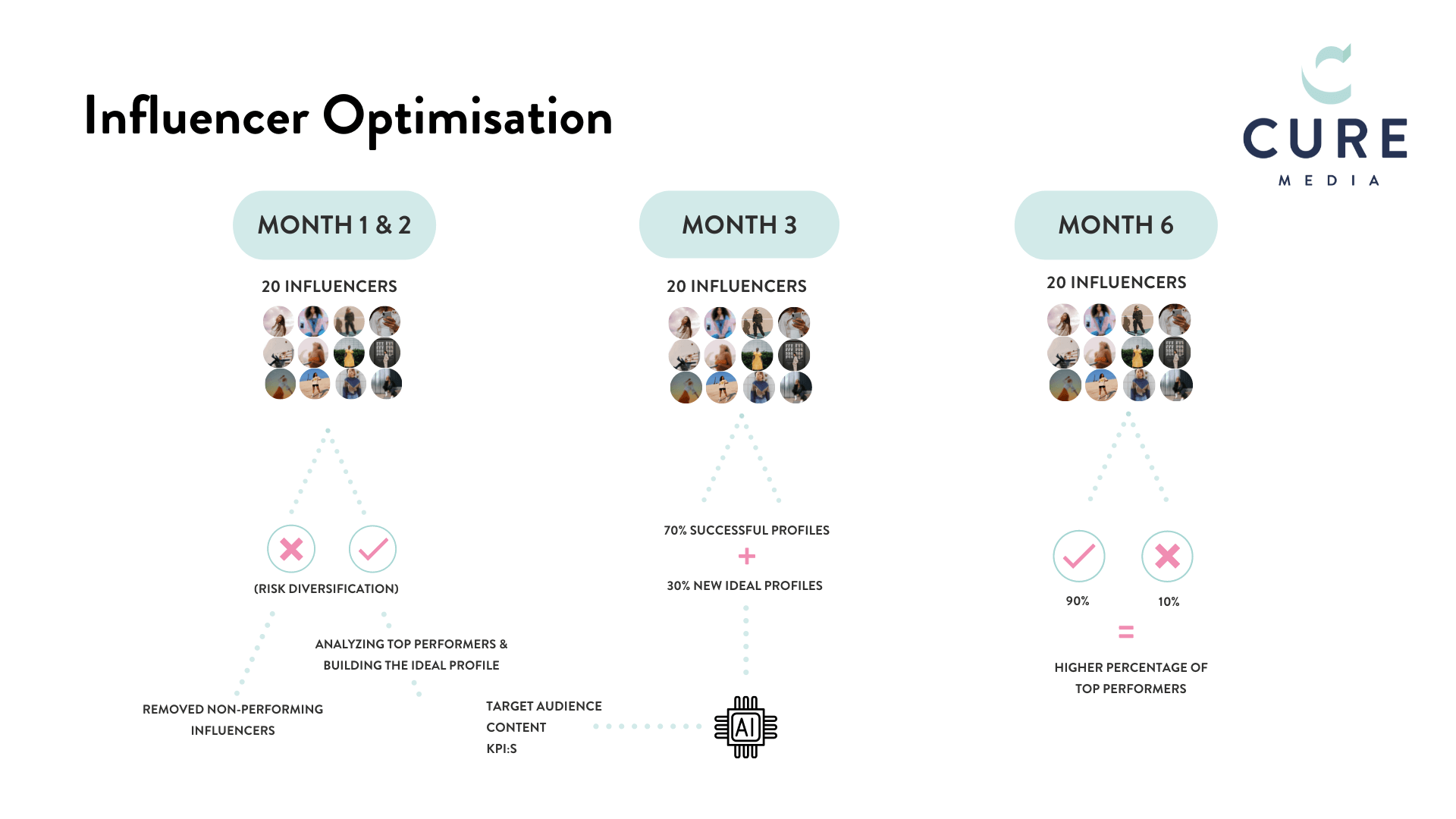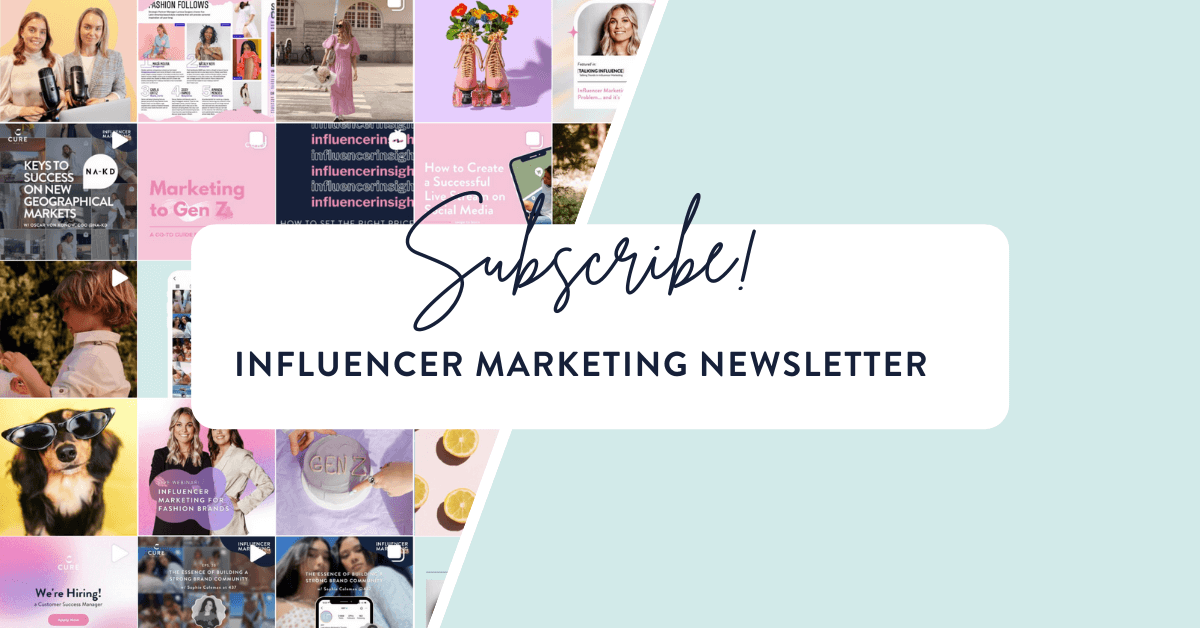While stunning visuals and winning creative concepts will certainly catch shoppers’ eyes on social media, the secret to taking your influencer marketing activities to the next level is being data-driven.
In this blog post, we will cover what it means to work with influencer marketing in a data-driven manner and how it can amplify any influencer marketing strategy.
What is data-driven influencer marketing?
At Cure Media, data-driven influencer marketing entails using historical and real-time data throughout the planning, activation, and follow-up stages of influencer activities to optimise current and future campaigns.
One of the primary reasons that brands hesitate to be data-driven with influencer marketing is the cost. Unlike other digital channels such as display and SEM, influencer marketing requires a substantial, long-term investment in influencers and content.
Data-driven influencer marketing is worth the investment, however, as it will make it infinitely easier to improve the channel over time and generate a greater ROI.

Choosing the right influencers
Being data-driven begins with choosing influencers. Using data at this stage of the planning process should be as obvious a choice as it is when using other channels.
Take paid social ads, for example. When using an ads manager, you choose your target group to make sure that you are reaching the correct audience. It would feel crazy to buy ads without targeting. The same should go for influencer marketing.
Using data to choose the right influencers entails more than looking at vanity metrics, as even seemingly straightforward information like an influencer’s location and age can be misleading.
For example, if you want to reach millennial women in southern Germany, you may assume that Alina, a 30-year-old influencer based in Munich, is a good fit for your campaign. But, once you look further into Alina’s profile with the help of an influencer tool, you would find that 80% of her followers are actually located in Brazil.
This is why prioritising data over vanity metrics is a critical component to succeed with your influencer activation. With data on your side, you’re able to weed out fake followers and identify accounts with a genuine influence on your target audience.
Visa detta inlägg på Instagram
Another metric to consider when choosing influencers is true reach. Many of us assume that the more followers an influencer has, the more people will see their sponsored content, and therefore the more people will be exposed to your brand.
The truth, however, is that an influencer’s estimated or potential reach does not always align with their true reach. By using a data-driven influencer tool, you may discover that an influencer with 100,000 followers only has a true reach of 10%, which gives them about 10,000 views per post.
On the other hand, an influencer with half the amount of followers may have a true reach of 80%, generating around 40,000 views per post. With the help of data in this scenario, you are able to choose the influencer that will actually spread the awareness your brand is looking for.
The benefits of a data-driven approach when selecting influencers are that you can engage with as many people as possible in your target audience and make the most of your investment. With that being said, using data to identify influencers is not enough to be considered data-driven. This is only one piece of the puzzle.
Optimisation
When you work with influencer marketing in an always-on manner over a long time period, you don’t have to wait until the end of a campaign to improve your results. Instead, you are free to optimise and fine-tune as you go.
During the optimisation stage, data can help answer questions like, which content formats are excelling? Can your influencer roster be tweaked? How can you optimise your activities to ensure the greatest return?
One way to optimise your outcomes is using lookalike audiences. This can be accomplished through an AI-powered tool that identifies influencers that are similar to those who are performing well for your brand.
This is an important step in optimisation as it ensures you get the most out of your influencer marketing investment. Without data to optimise your campaign at this stage, your brand would be stuck working with influencers that are a poor brand fit or are underperforming.
With data, however, you are able to collaborate with increasingly better fit influencers. Utilising such a tool requires a lot of historical data. The more data you have at hand, the better chance you have of identifying high-performing influencers.
Optimising your influencer marketing activities not only includes identifying new profiles to work with, but also strengthening existing relationships with influencers. Working with influencers over a long time period gives them the chance to steadily improve their content, get to know your brand, and build trust with your target audience. This relieves a lot of your marketing team’s workload, as you can trust these influencers to deliver high-quality content with little oversight on your part.
At its core, influencer marketing is no different from other digital channels when it comes to optimisation. In the same way that you optimise a paid search campaign by revising ads, bidding strategies, and keywords, it’s important to continuously tweak and improve influencer campaigns. Only by taking a long-term approach are you able to understand which influencers perform best, what content lands, which messages resonate, and which platforms deliver.

Follow-up & measuring results
Once an influencer activation has finished, brands must follow up and measure the results to assess whether or not they met their KPIs, and learn what worked well and what didn’t for the next activation.
At this stage of the influencer marketing process, you need to take a step back from the last click in the customer journey to get a more holistic and accurate understanding of the results. The most important question to ask at this stage is “how has influencer marketing affected other channels?” Thinking in this manner will show you how the channel impacts others like organic traffic and search advertising.
Another way to gauge the larger picture of an influencer activation is brand surveys. These can be used before and after a campaign to measure how factors such as brand awareness, perception, and purchase intention have been impacted by influencer marketing.
To wrap up…
In summary, data is a critical component to succeed with influencer marketing.
Firstly, by using data-driven influencer tools, you can identify profiles that are guaranteed to resonate with your target audience.
The second and most important part of working with influencer marketing is optimising as you go. This helps you improve your results and apply learnings in real-time.
Finally, the follow-up and measurement stage will help you improve your upcoming activations and give you a holistic view of your investment and ROI.
Check out our blog or newsletter for more inspiration on how you can approach influencer marketing.



